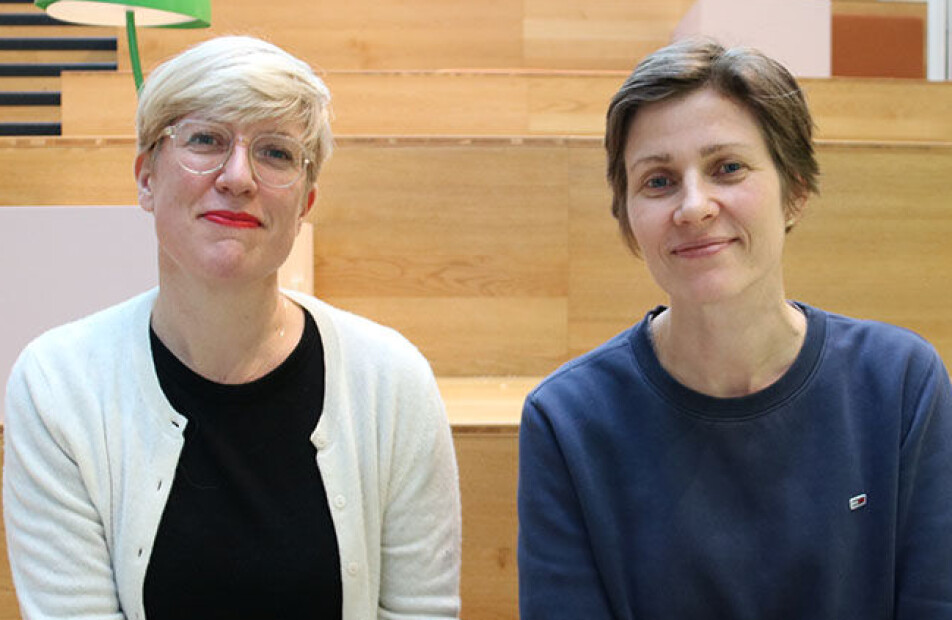THIS ARTICLE/PRESS RELEASE IS PAID FOR AND PRESENTED BY University of Oslo - read more

How the media use influencers to reach children and teenagers
The tastes of young people steer new media developments.
“The media industry wants to draw in talent from social media platforms such as Snapchat and TikTok. The idea is that once you get young people to use your channels, they will consume more content,” Marika Lüders, a media researcher at the University of Oslo, says.
Together with fellow researcher Vilde Schanke Sundet, she investigates the relationship between social media, legacy media and young people in the project Global natives? Serving young audiences on global media platforms.
The two researchers have found that many national media organisations employ young content creators, such as influencers and YouTubers, to participate in and create TV programmes and podcasts.
Employing them gives national media players many advantages.
“If you employ a YouTuber, you gain knowledge about how to create YouTube videos. You also get social media profiles with many followers, which in turn enables you to create awareness about and promote your own content. In addition, you get new talents who are good at creating content that young people love,” Sundet says.
A new media generation
There is a lot of talk about young people in the media industry. Sundet and Lüders have previously identified a common notion among national media organisations about young people being a lost generation.
They found that young people’s media habits are viewed differently by the media now than previously.
Today, young people are seen as a new generation that will not return to legacy media organisations when they become older.
“It means that their media habits have changed permanently, and as a consequence, the industry will need to change if it’s going to be relevant in the future,” Sundet explains.

From national media to global platforms
In their research, Sundet and Lüders found that national media organisations find it challenging to reach the young.
“Today, you can bypass Norwegian media and go straight to international media. Previous generations could not do that in the same way,” Sundet says.
The researchers interviewed young people between the ages of 15 and 19. Many of them said that they followed Norwegian content until they were 12-14 years old but then lost interest and started looking for international content. However, young people seeking what’s new is not a new phenomenon.
“Young people have always had different media habits than adults and children. That is one of the reasons why the media industry has been so interested in this group,” Sundet says.
From YouTuber to national celebrity
According to the researchers, in the search for young people’s attention, it is not only the national media organisations that benefit from collaborating with influencers and YouTubers. It is also useful for young content creators to connect with legacy media.
“Some YouTubers want to be big on YouTube, while other Youtubers want to have a media career and become TV hosts,” Vilde Schanke Sundet says.
For those seeking a career in the media industry, it is an advantage to have a large group of followers, social media expertise – and talent.
“Joining the established media industry can for some be a natural career move. They get access to a professional production team. In addition, it can create new opportunities, for instance, the possibility to reach a wider audience than followers on their own social media accounts,” Lüders says.
Several influencers and YouTubers have become national celebrities after being visible in the national media, both as content creators and as participants in entertainment programmes.
“Today, there is a notion that you can start on YouTube and end up becoming a big TV personality in Norway,” says Lüders.
Celebrities from different platforms create common references
In recent years, influencers, YouTubers and gamers have become more prominent among politicians and athletes in entertainment programmes such as 71 Degrees North, Farmen (The Farm), Gym, 4ETG and Maskorama (The Masked Singer).
“Presenting names that all family members are familiar with can be unifying and lead to discussions about Norwegian entertainment that both young people and adults are interested in,” Lüders says.
She believes it is important that different generations have some common references, and that Norwegian programmes that attract a substantial part of the population can help to create such references.
“When you talk to your 15 and 16-year-olds, you discover that you live in different media realities and that you have lost a common public sphere to relate to,” she explains.
Cooperation between different media participants
However, problems can also arise when national media organisations take on influencers and Youtubers as television and podcast hosts.
Sundet and Lüders are interested in studying what happens when two different industries meet and work together. And how they can achieve good forms of cooperation that benefits both parties.
“The legacy media industry and social media platforms are driven by completely different logic. What attracts attention and creates success in one industry is not necessarily what gives attention in the other,” Sundet says.
The fact that the media platforms have different audiences could also be a dilemma for the influencer.
“A YouTuber can get away with saying things on YouTube, where you are speaking to your crowd and have the same language and culture, that you might not get away with on a larger arena such as national broadcaster NRK. That’s not just the fault of the influencer,” Lüders says.
References:
M. Lüders and V.S. Sundet. 'Globalt innfødte som en tapt generasjon? En konseptualisering av unge som en mediegenerasjon' (Global natives as a lost generation? A conceptualisation of young people as a media generation), Norsk medietidsskrift, vol. 30, 2022. DOI: 10.18261/nmt.30.1.1 Abstract. https://www.idunn.no/doi/10.18261/nmt.30.1.1
M. Lüders and V.S. Sundet. “Young people are on YouTube”: industry notions on streaming and youth as a new media generation, Journal of Media Business Studies, 2022. DOI: 10.1080/16522354.2022.2125262

This article/press release is paid for and presented by the University of Oslo
This content is created by the University of Oslo's communication staff, who use this platform to communicate science and share results from research with the public. The University of Oslo is one of more than 80 owners of ScienceNorway.no. Read more here.
See more content from the University of Oslo:
-
Putin’s dream of the perfect family
-
How international standards are transforming the world
-
A researcher has listened to 480 versions of Hitler's favourite music. This is what he found
-
Researcher: "AI weakens our judgement"
-
New, worrying trend among incels, according to researcher
-
Ship’s logs have shaped our understanding of the sea




































